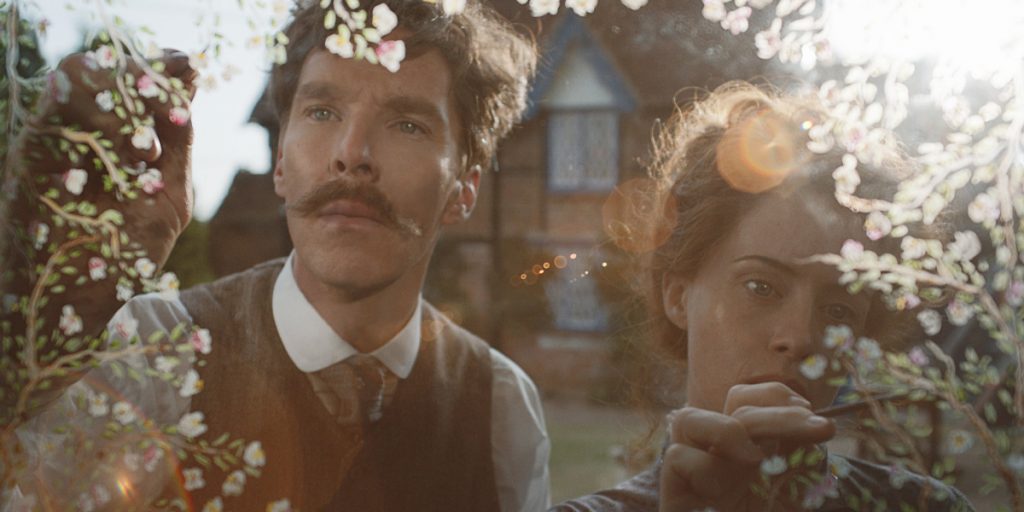The Electrical Life of Louis Wain follows a familiar formula, but director Will Sharpe’s signature style – and Cumberbatch’s playful performance – set it apart.
Acclaimed American painter Robert Rauschenberg once famously said “art can change the world,” and, in the case of celebrated English artist Louis Wain, this couldn’t have been truer. Prior to the anthropomorphic portrayals of cats in his artwork, felines were thought as nothing more than nuisances by British society at large. However, with his humanistic characterization of these critters, England warmed up to the idea that cats could be appreciated and even outright adored. H.G. Wells himself once remarked that Wain “made the cat his own” and “invented a cat style, a cat society, a whole cat world.” Still, in spite of his art’s significance, Wain’s name is hardly ever uttered alongside the other popular artists of his era, and few know of his historical achievements. With The Electrical Life of Louis Wain, writer-director Will Sharpe seeks to put Wain’s story in the spotlight once more, and though the film is at times plagued by that familiar biopic “formula,” charming performances from Benedict Cumberbatch and Claire Foy and Sharpe’s signature style elevate this chronicle considerably.
Born and raised to be a stately member of London society, Louis Wain (Benedict Cumberbatch, of Doctor Strange and The Power of the Dog) spends his days pursuing his passion for art by working as a newspaper illustrator, encouraged by his editor Sir William Ingram (Toby Jones, of Captain America and The Hunger Games) who sees something special in his sketches. When returning home to his five sisters after a long absence, Wain is greeted by their new governess, the enchanting Emily Richardson (Claire Foy, of The Crown and First Man). The sparks between the two materialize mere moments later, but they’re initially warned against beginning a relationship, as Richardson is ten years older than Wain. Nevertheless, they defy social standards and abandon the city for a cottage just outside of town, and Richardson continues to serve as Wain’s muse, inspiring his artistic imagination. And yet, it’s their adoption of a stray cat that most impacts his work, as both Emily’s love for the creature and its own alluring appeal cause Wain to create paintings that personify their idiosyncratic identities and alter their perception in the British public.
In a complete 180 from his petrifying performance in Jane Campion’s The Power of the Dog (which also played at TIFF), Cumberbatch inhabits the character of Louis Wain with commanding charisma, instantly attracting us to this quirky artist. Wain may not be as much of a stretch for Cumberbatch as Power’s Phil Burbank – as he thrives in these “eccentric genius” roles – but it’s thrilling to see him in top form regardless, capably capturing the chaos of Wain’s psyche as he brings forth his art for the world, especially later on when he experiences abysmal losses in his life and subsequently suffers from his schizophrenia. Cumberbatch certainly entertains enough as Wain ascends to fame in the art world, but he continues to discover new depth in this part as he ages, illustrating what time has taken away from him and underscoring how unfortunate it is that his contributions to the advancing acceptance of cats by society have been overlooked. The stereotypical biopic structure of The Electrical Life of Louis Wain threatens to undercut his work at times, but Cumberbatch always rises above.

Matching – and perhaps even surpassing – him in magnetism is the expectedly captivating Claire Foy, who hones in on this shamed woman’s humanity and gives the film its beating heart. Her bizarre but brilliant chemistry with Cumberbatch’s Wain is never not compelling, and it speaks to her soulfulness in this part that her spirit is always felt (especially in Wain’s art) even when she isn’t onscreen, continually reminding us of her enduring influence of this entire enterprise. The rest of the (perhaps too large) supporting cast fill the film with playfulness and personality too, but none – save for perhaps Andrea Riseborough as Caroline, the oldest of Wain’s five sisters, who spectacularly rides the line of sternness and sincerity in her performance – come close to the commanding presences of Cumberbatch and Foy. (Though it should also be said that Olivia Colman is as enchanting as ever as our narrator, giving the feature a bit of a “fairy tale” feel with her whimsical voice work).
Though Sharpe’s script (which he co-wrote with Luca’s Simon Stephenson) is more conventional than the creative he’s crafting his movie around – especially as the third act devolves into dreary drama when Wain faces his “fall” – his subversive directorial style emits an innovative energy that is utterly irresistible. It can even be said that he should’ve employed this style even more often than he does, but the scenes we do get are stellar nonetheless, placing us in the madness of Wain’s mind perfectly and showcasing the world as he sees it. Additionally, thanks to consummate costume design from Michael O’Connor (The Duchess, Ammonite) and sumptuous set decoration from Charlotte Dirickx (The Personal History of David Copperfield, The Death of Stalin), the aesthetics of the film match Wain’s own aberrance, making for vibrant visual stimulation if nothing else. In the end, The Electrical Life of Louis Wain may not radically redefine how a Hollywood biopic is made, but there are more than enough endearing elements here to hold your attention for two twee hours, and Sharpe should be commended for constructing a movie that so terrifically tries to “break the mold” of this genre.
The Electrical Life Of Louis Wain had its Canadian Premiere at TIFF on September 11, 2021 and is now available to watch on digital and on demand.

